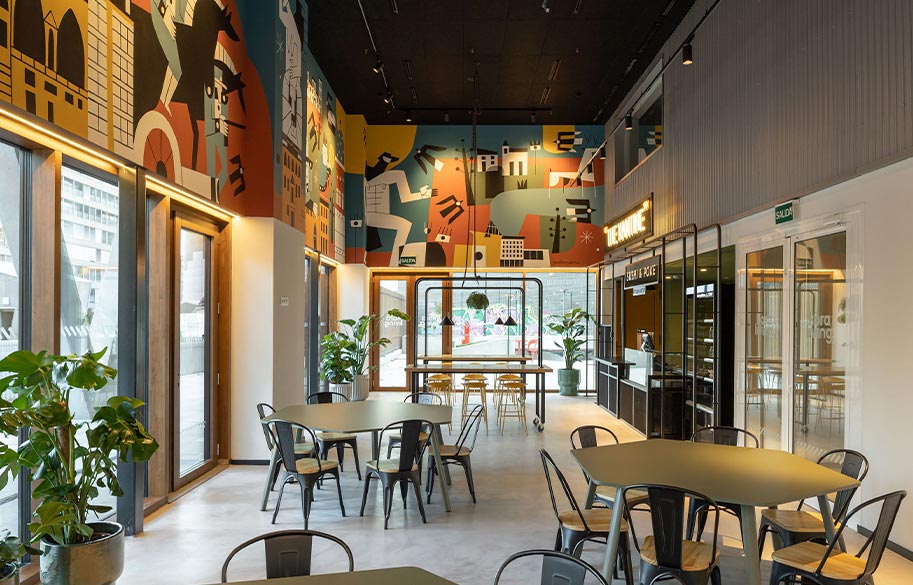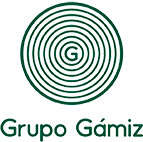This is the largest Passivhaus accommodation in Europe
It is called Kora Green City, located in Vitoria-Gasteiz, and is one of the most sustainable buildings in the world. Radiata pine curtain wall contributes to the architects’ energy efficiency goals.
Sustainable architecture is a magical cocktail. The first of its ingredients is the architects’ desire to build a better world. Then comes the hard part: finding the materials, the certifications, the working methods… The guarantee that each step is as efficient as possible: achieving goals with the lowest possible carbon footprint.
The Passivhaus certification began in Germany in 1988. This construction model can be summarised in five key points, with the aim of achieving practical and comfortable buildings and reducing energy consumption in their construction by at least 70%, compared to conventional building standards.
This ambitious aspiration consumed the creators of the project, Fernando Ortea and A54 Architects. After a time, the Kora Green City complex of studios and apartments appeared in Vitoria-Gasteiz: the largest Passivhaus accommodation in Europe.
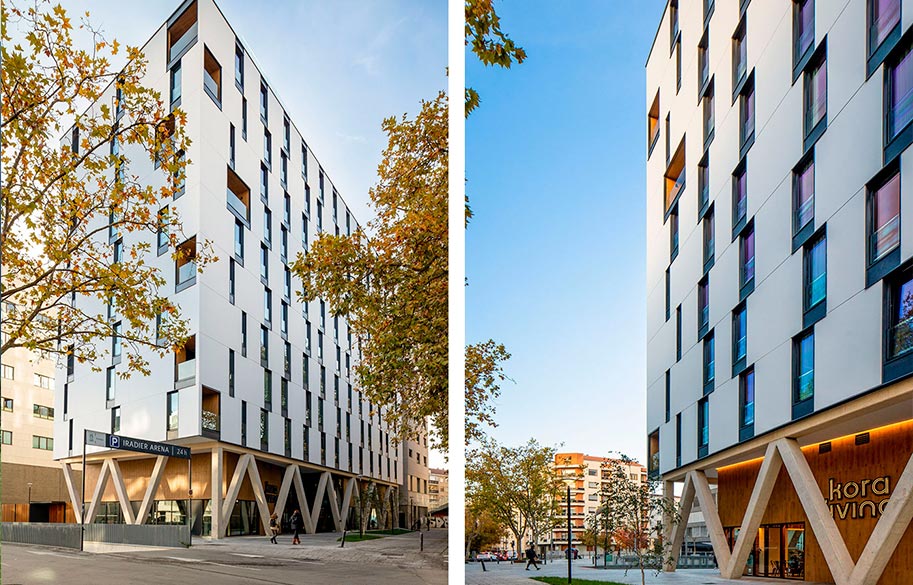
A forest of 13,500 trees at the heart of the Basque capital
Thanks to the Passivhaus standard, Kora Green City has saved the atmosphere 98% in CO2 emissions. This is equivalent to the purification produced by 13,500 trees in one year.
At the same time, Kora Green City obtains the majority of its energy from nature: photovoltaic panels, air source heat pumps, geothermal energy, etc. The goals for lighting and heating the rooms using natural sunlight are achieved through a kind of teamwork to which the wooden curtain wall of the façade contributes in good measure.
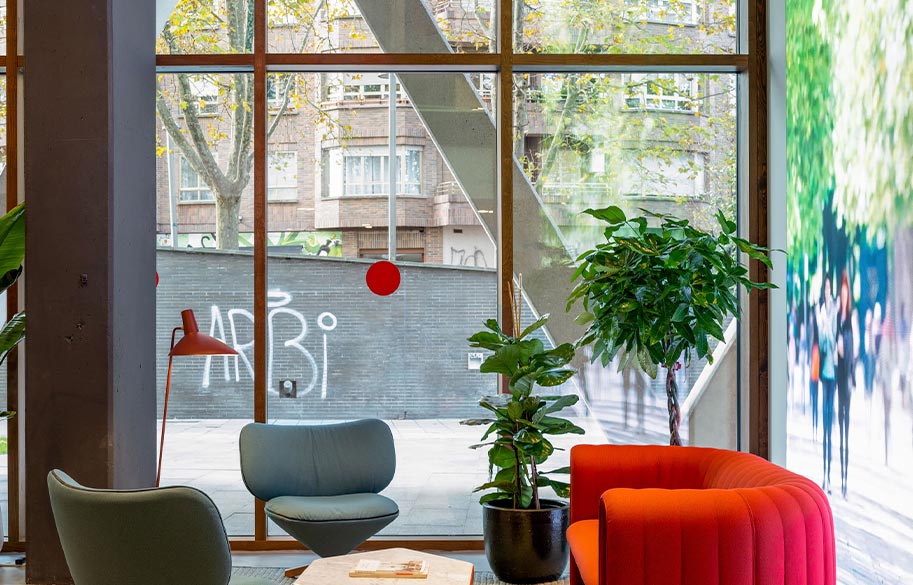
¿Fachadas sostenibles? Con madera certificada, por supuesto
Thanks to technology, laminated wood has been revolutionising sustainable architecture for several years. Custom structural beams, curved beams, creative designs with beams with lengths and widths that were unthinkable some time ago are now possible.
Thanks to technology… and certifications. Lightweight sustainable façades with wood are only possible thanks to certifications such as the CE marking for structural use, the seal awarded to VIGAM, the glulam beam by Grupo Gámiz, available in oak (in this case it is the only oak glulam in the world with CE marking for structural use), ash, iroko and radiata pine. The latter is the material chosen for the wooden curtain walling of the Kora Green City façade.
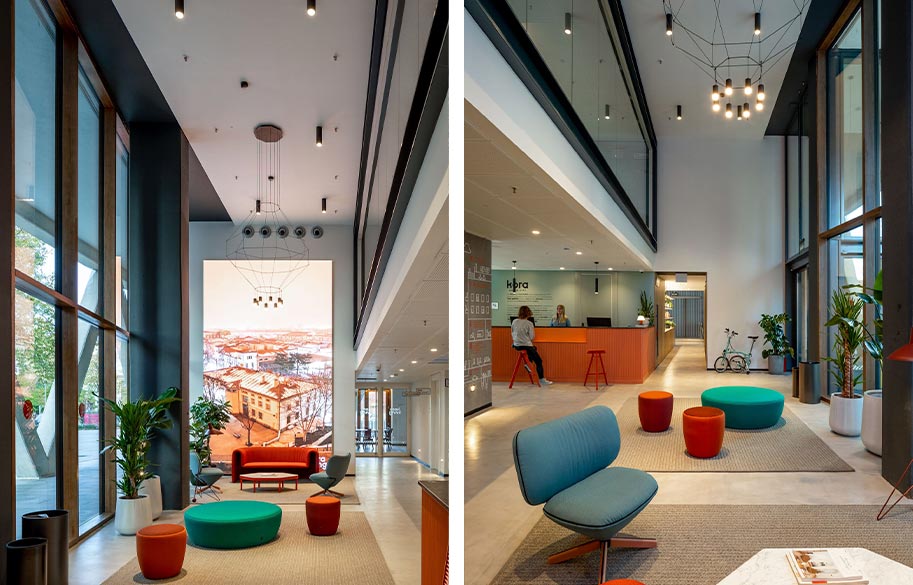
To see all the images from this project, consult the technical data.
Wooden curtain wall: beauty, elegance, warmth and a more protected planet
Certified laminated wood has achieved just that: that sustainability takes creativity by the hand. Today architects are not forced to forego designing what they see in their minds due to materials that are unsuitable for their sustainability goals.
As an example, a button: here are eight real examples of oak curtain wall on façades. You can see how leaders in the profession such as Renzo Piano and Herzog & de Meuron create their sustainable façades.
